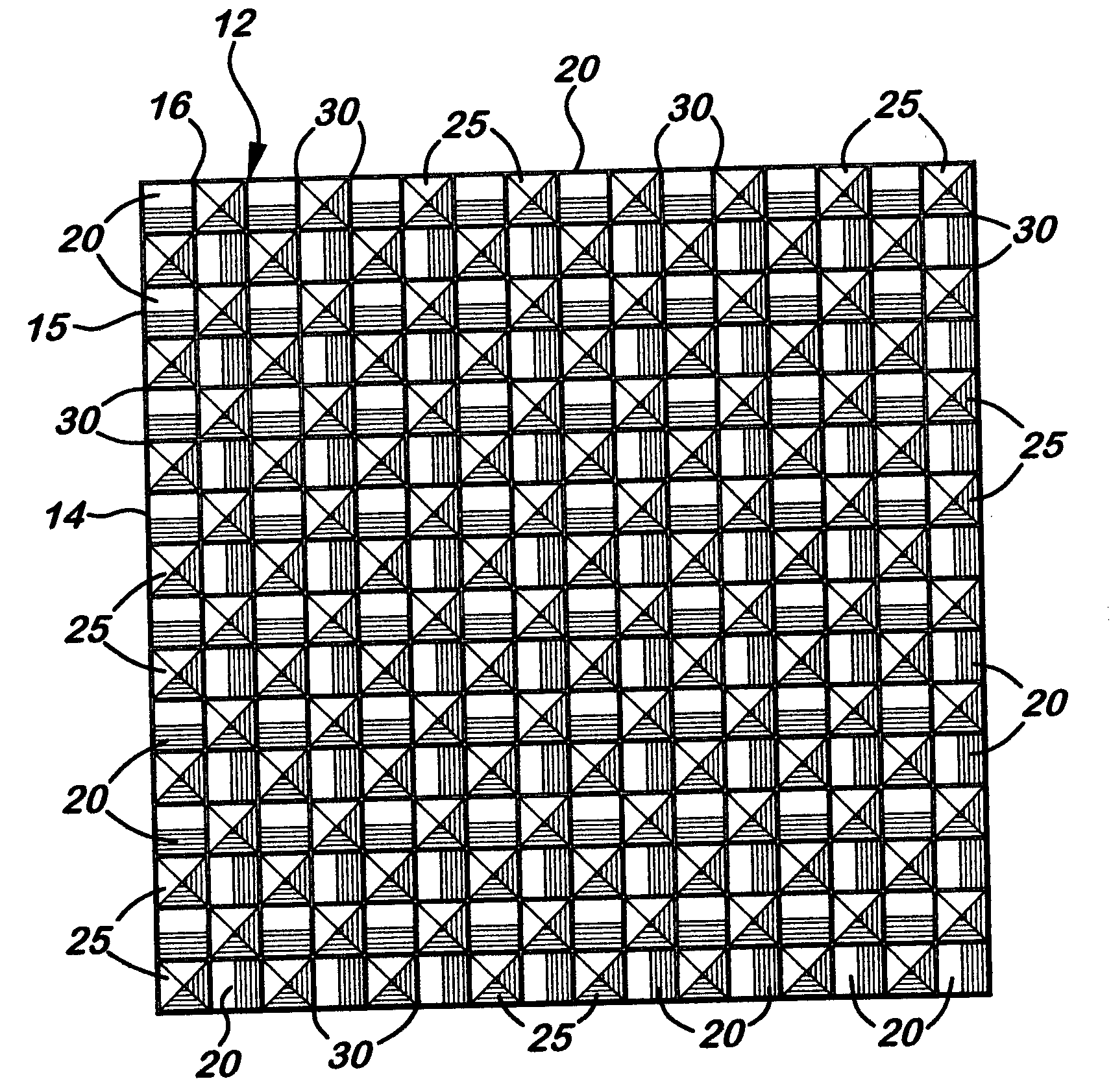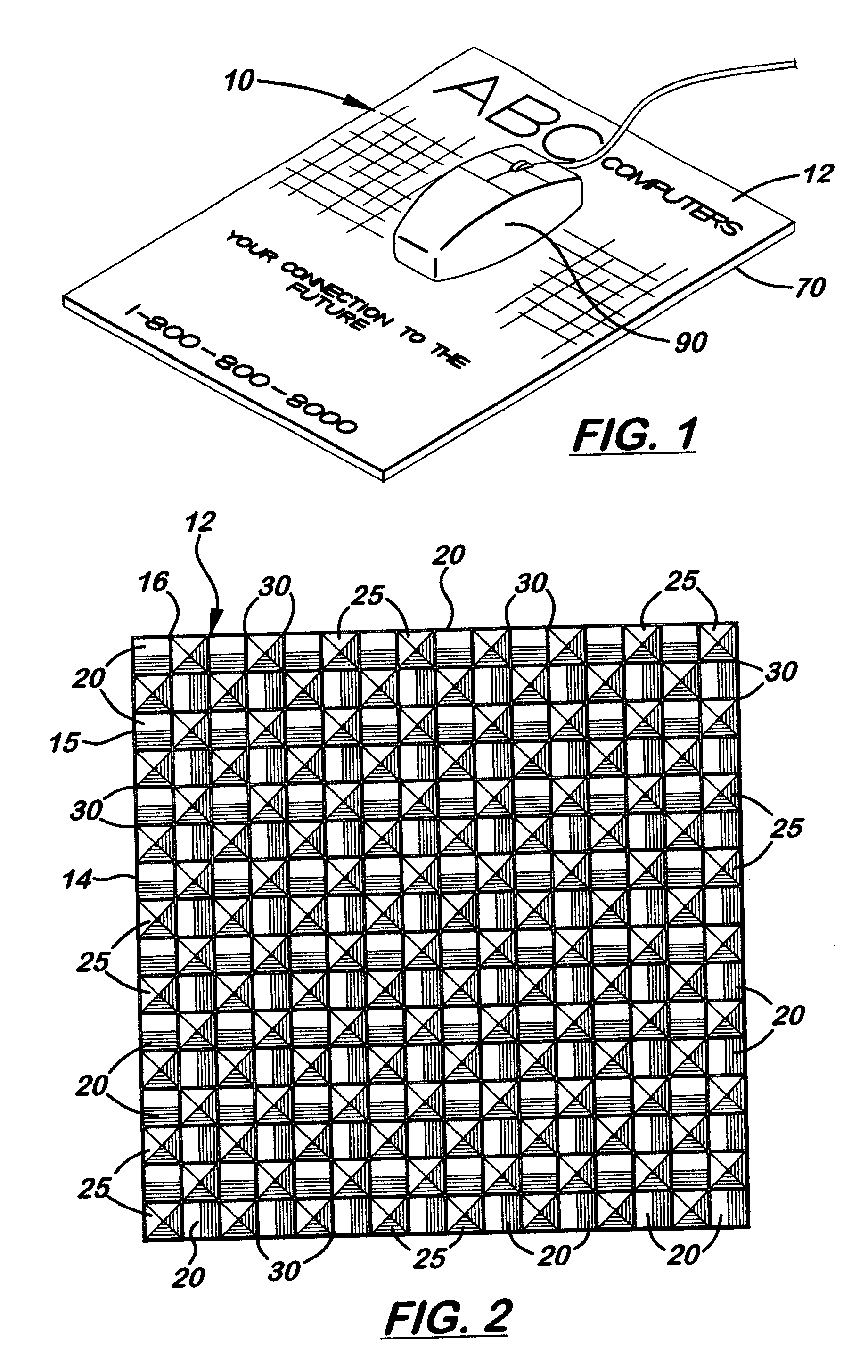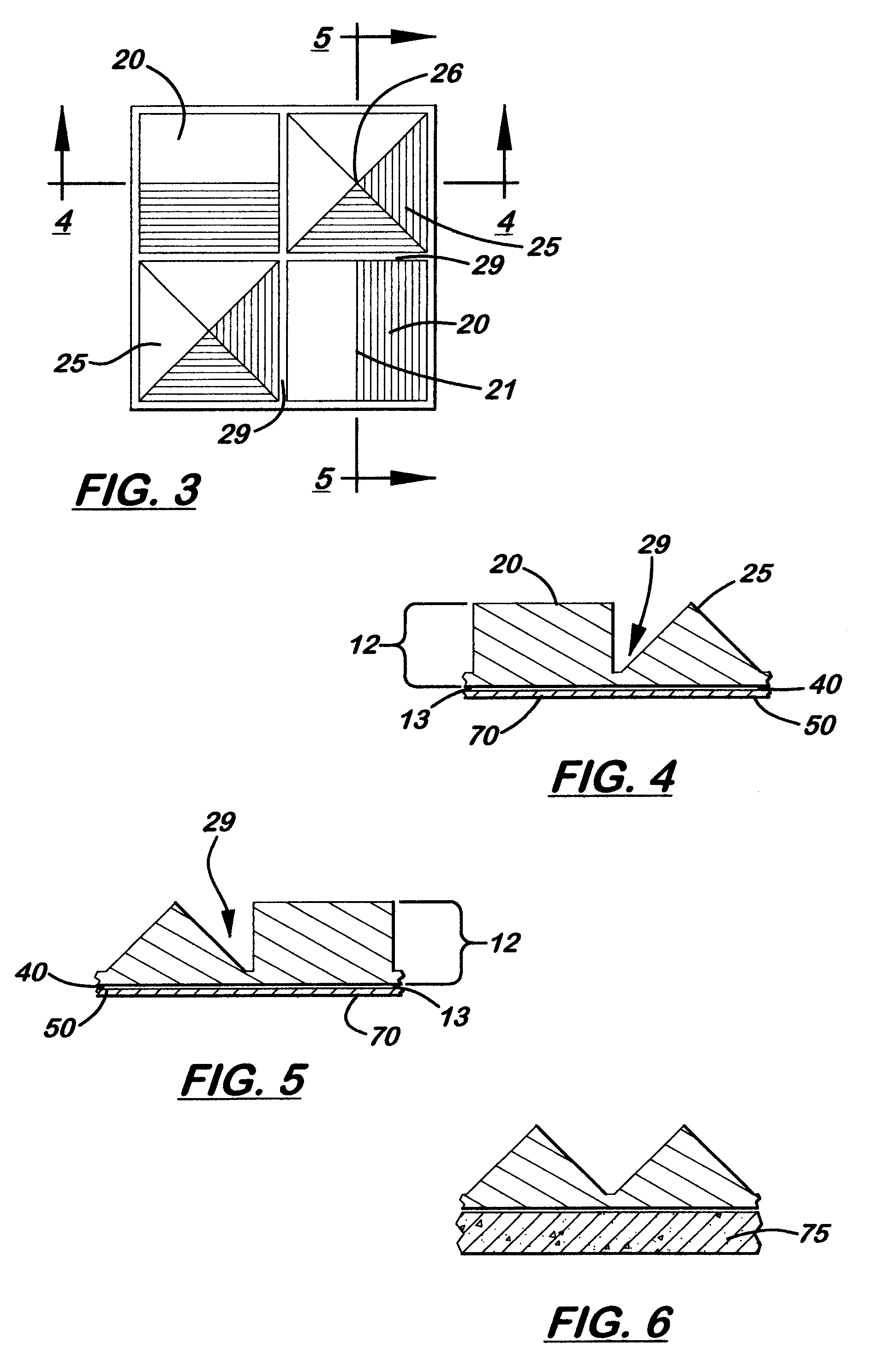Traction mouse pad
a mouse pad and mouse technology, applied in the field of mouse pads, can solve the problems of reducing traction, erratic cursor movement on display monitors, and insufficient room for the typical mouse pad described above, and achieve the effect of improving traction properties
- Summary
- Abstract
- Description
- Claims
- Application Information
AI Technical Summary
Benefits of technology
Problems solved by technology
Method used
Image
Examples
Embodiment Construction
)
There is shown in the accompanying FIGS. 1-5, a planar mouse pad 10 with self-cleaning and improved traction properties. The mouse pad 10 includes a parallel top layer 12 and a bottom anti-skid layer 70. As shown more clearly in FIG. 2, formed on the top layer 12 is a top control surface 14 with a plurality of alternating micro-size prismatic and pyramidal shapes, 20, 25, respectively. More specifically, the prismatic and pyramidal shapes 20, 25, respectively, extend upward and are integrally formed in the top layer 12. The shapes 20, 25, are alternately arranged in rows 15 and columns 16 perpendicularly to align on the top layer 12. The prismatic shapes 20 measure approximately 0.42 mm in length and 0.42 mm in width and alternate in horizontal and vertical alignment within each row 15 and column 16 so that their respective longitudinal axis 21 intersect the apex 26 of the adjacent pyramidal shapes 25. The base leg of each pyramidal shape 25 measures approximately 0.42 mm in length...
PUM
| Property | Measurement | Unit |
|---|---|---|
| height | aaaaa | aaaaa |
| length | aaaaa | aaaaa |
| thick | aaaaa | aaaaa |
Abstract
Description
Claims
Application Information
 Login to View More
Login to View More - R&D
- Intellectual Property
- Life Sciences
- Materials
- Tech Scout
- Unparalleled Data Quality
- Higher Quality Content
- 60% Fewer Hallucinations
Browse by: Latest US Patents, China's latest patents, Technical Efficacy Thesaurus, Application Domain, Technology Topic, Popular Technical Reports.
© 2025 PatSnap. All rights reserved.Legal|Privacy policy|Modern Slavery Act Transparency Statement|Sitemap|About US| Contact US: help@patsnap.com



